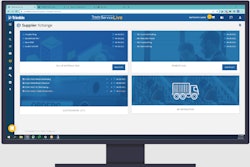
The manufacturing industry was hit hard during the height of the COVID-19 pandemic, potentially altering the industry for years to come. A combination of the rapid move to a distributed workforce and growing supply chain pressures left manufacturers scrambling to accelerate their industry 4.0 initiatives in order to maintain production and operations, and keep their businesses up and running.
The interrupted global supply chain and increased demand from consumers stuck at home – creating shortages of essentials like toilet paper – will be an event that many will remember for years to come. But what about the employees that make up this workforce?
These pressures have taken a toll on them too, and employers must act now to retain these key workers that help provide many of our goods and services – or face a detrimental talent shortage greater than the current half a million job openings. Let’s take a look at some of the challenges manufacturing workers face and how business leaders can address them.
Burn Out is Real
The manufacturing industry was, and in some ways still is, at the frontline of the pandemic, experiencing longer hours and new demands on their technology and employees. This has ultimately resulted in workers feeling burnt out, and recent data shows that 47 percent of global manufacturing employees feel like they cannot truly disconnect when they take a scheduled break at work.
As the pressures on the supply chain and goods production continue to stretch the industry and its workforce thin, finding ways to help those workers stay engaged without burning out is critical – especially in the wake of the Great Resignation as companies work to retain key talent. Manufacturers currently face a frightening reality as demand for goods skyrockets and the U.S. economy reopens, but as many as 2.1 million manufacturing jobs are expected to remain unfilled through 2030.
It’s more clear than ever before that as the industry continues to weather the storm, companies will need the right tools to support workers and maintain the high level of engagement and performance needed to keep their teams productive and happy.
The Right Technology Tools
Ensuring workers have the appropriate tools that enable them to work when and where they need to will create bigger gains in productivity and efficiency across the manufacturing sector, as well as increase employee retention. In tandem, COVID-19 has put a spotlight on the essential need for unified communication and collaboration tools, such as unified communications as a service (UCaaS) technology, that enables manufacturing workers to effectively connect and work remotely or on the go.
Recent data highlights this need, with 61 percent of manufacturing workers agreeing that, given the right technology, they could work productively outside of an office setting or location. But this data also found that one-third of these workers were dissatisfied with the ease of use and access to communications and collaboration tools currently provided by their company.
It’s evident that the right collaboration tools are key to increased productivity and engagement. Whether that’s a platform with advanced analytics, supports field services, and/or offers emergency features to ensure employee safety on and off the floor, businesses should select the solution that best fits their unique needs. This has the potential to help shape and support productivity and flexibility in the current and post-pandemic workforce - such as enabling remote assistance, troubleshooting, and virtual meetings - instead of just dismissing the idea that flexible work isn’t possible.
While we can’t predict the future of the manufacturing industry and its talent pool, having the right technology in place is critical to enabling employees to meet the ever-changing demands and opportunities brought on by COVID-19 and beyond. The pandemic has made it clear that the next large-scale business disruption could be just around the corner, and it’s up to manufacturers to prepare their workers for this possibility, while also ensuring that they feel supported within the organization.
Mitch O'Brien is a principal product manager at Fuze.






















